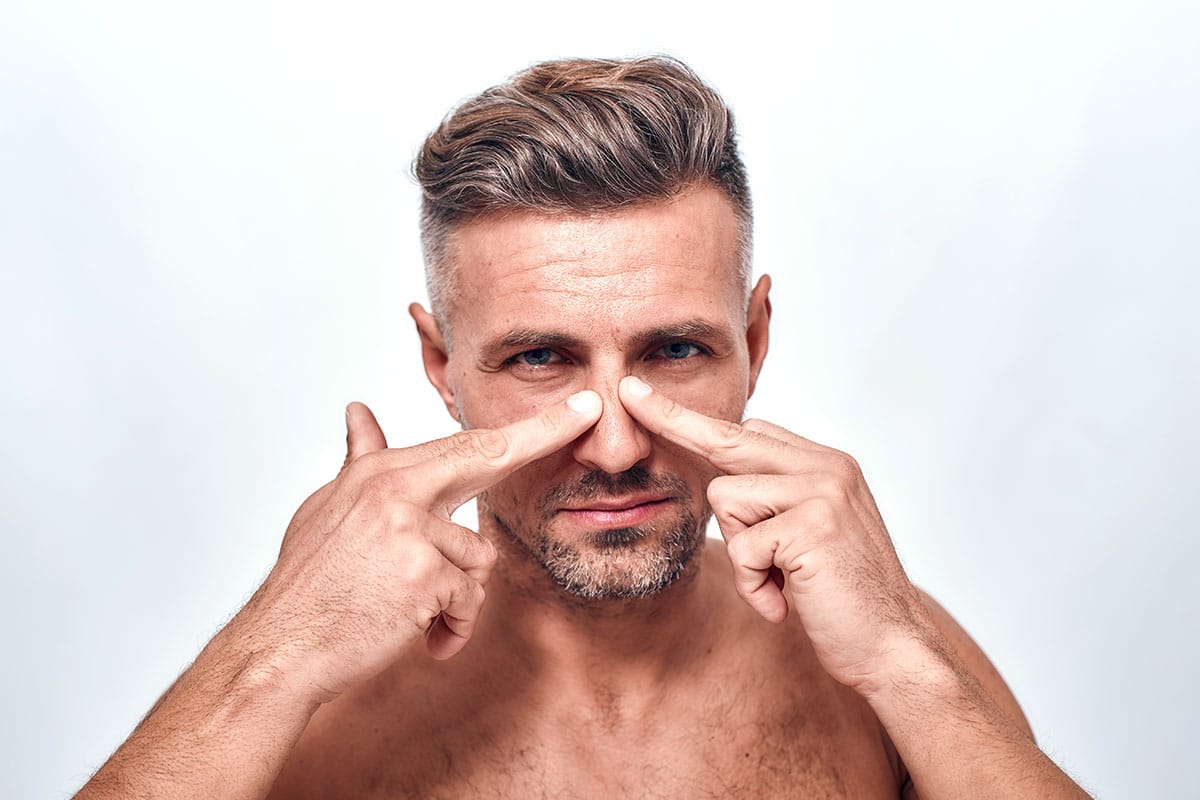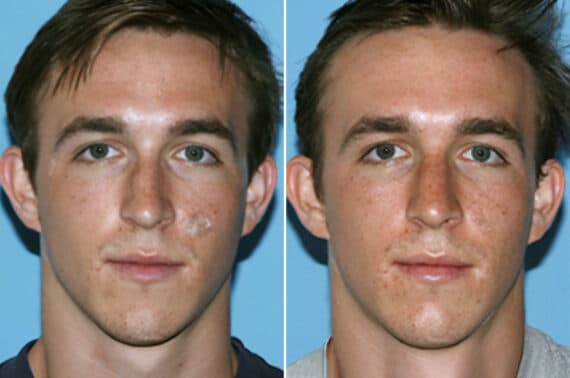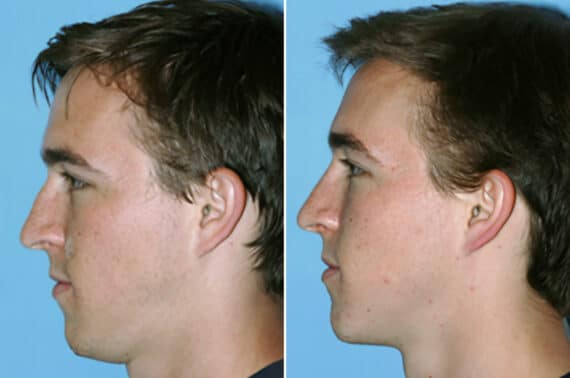Have you recently had a nose job or are you planning to get one soon? Wondering if nose pain after rhinoplasty is something to worry about? You’re not alone. Rhinoplasty is one of the most popular cosmetic procedures in the world, and with it comes common concerns, especially about pain, recovery, and long-term comfort.
Although the idea of surgery can feel daunting, the truth is that modern rhinoplasty techniques are designed with your comfort and safety in mind. Whether you’re undergoing surgery for cosmetic improvement, functional correction, or both, understanding what to expect can help you feel more confident and prepared for the journey ahead.

Is Rhinoplasty Painful?
Rhinoplasty is generally considered a safe procedure, and most patients report only mild to moderate discomfort rather than severe pain. This is because surgeons often use techniques that minimize tissue trauma and postoperative swelling. A sore or tender nose is a typical side effect in the days following surgery, but it is usually well managed with prescribed pain relief. When performed by a skilled rhinoplasty specialist, rhinoplasty is not only safe but also comes with effective treatment plans for post-op care that ensure a smooth recovery.
What Causes Discomfort After a Nose Job Procedure?
Discomfort following a rhinoplasty procedure is a common experience and usually stems from several interrelated factors. Immediately after surgery, patients often report soreness around the nose and under-eye area, which is primarily caused by swelling and inflammation as the body begins its healing process. Nasal congestion is also typical, especially when internal splints or packing are used, making it difficult to breathe through the nose for several days.
In some cases, nerve irritation near the nasal tissues can lead to temporary headaches or sensations of numbness. Additionally, the surgical manipulation of nasal structures may cause sinus pressure, particularly in the early stages of recovery. All of these symptoms are considered normal responses to the rhinoplasty procedure and generally improve within the first couple of weeks as the healing progresses.
How to Reduce Pain and Swelling After Rhinoplasty Surgery
Managing discomfort after rhinoplasty involves more than just waiting it out—active steps can make a big difference. With the right habits and precautions, you can ease your symptoms and support your body’s natural healing process. From the moment you leave the operating room to the months after surgery, consistent and thoughtful post-operative care is essential.
Below are some of the most effective techniques patients can use to minimize pain and swelling during recovery. Incorporating these tips into your daily routine can help you feel more comfortable and get back to your normal life sooner.
Prescribed Medications
One of the most effective ways to manage post-operative pain after rhinoplasty is by following your surgeon’s instructions for prescribed medications. These may include pain relievers, anti-inflammatory drugs, and sometimes antibiotics to prevent infection. Taking medications on schedule can significantly reduce discomfort and help you stay ahead of any developing symptoms. It’s important not to skip doses, as consistent use helps minimize pain and swelling during the critical first few days of recovery.
Cold Compresses
Applying cold compresses to the cheeks and areas around the nose during the first 48 hours after surgery can significantly help with the decrease in swelling. The cold temperature constricts blood vessels, which in turn reduces inflammation and provides a numbing effect that eases discomfort. Be sure to avoid placing ice directly on the nose itself, as the pressure could interfere with the delicate healing structures. Gentle, timed applications throughout the day can offer consistent relief and improve your overall recovery experience.
Get Plenty of Rest
Your body does most of its healing while you sleep, which makes getting adequate rest one of the most important parts of your recovery process. Avoiding overstimulation and allowing yourself to fully relax helps reduce overall stress on your system and enhances tissue repair. Prioritize uninterrupted sleep by setting up a calm, quiet environment and following a consistent schedule. The more rested you are, the better your body can manage swelling, bruising, and post-operative discomfort.
Keep Your Head Elevated
Keeping your head elevated, especially while sleeping, is a simple but powerful way to reduce swelling and promote proper drainage after rhinoplasty. Use extra pillows or a wedge pillow to keep your head above heart level, which helps minimize fluid buildup around the nose. This position also reduces the risk of accidentally bumping or disturbing the surgical site. Maintaining head elevation for at least the first week post-surgery can significantly improve comfort and recovery outcomes.
Avoid Strenuous Activities
While light movement is encouraged during the early days of recovery, it’s important to avoid any strenuous activities—like heavy lifting, vigorous exercise, or bending over—especially in the first few weeks after surgery. These actions can increase blood flow to the face, leading to more swelling, discomfort, and even bleeding. Giving your body the time it needs to heal without added stress is essential for a smooth recovery and helps maintain the integrity of the surgical results.
Diligent Incision Care
Caring for your nasal incisions is essential for preventing infection and supporting optimal healing. Follow your surgeon’s instructions closely, which may include cleaning protocols, ointments, or avoiding certain skincare products near the site. Being diligent with your care routine not only protects the delicate tissue but also helps preserve your final postoperative results. Consistency and cleanliness in this stage of recovery can make a significant difference in how smoothly you heal and how your nose looks once the swelling subsides.
Don’t Blow Your Nose
Blowing your nose too soon after surgery can disrupt healing and cause complications. In the early recovery phase, your nasal passages are highly sensitive, and even gentle pressure can interfere with internal sutures or splints. Additionally, a forceful blow may lead to bleeding or worsen swelling. If you’re dealing with a runny nose, it’s best to gently dab instead of wiping or blowing. Let your surgeon know if nasal congestion persists, and always follow their guidance to protect your healing nose.
Protect Your Nasal Structure
Your nose is particularly vulnerable in the weeks following rhinoplasty, so protecting the area is critical to ensure proper healing. Avoid any situations where your nose might be bumped, touched, or compressed—including contact sports, crowded spaces, and even snug-fitting eyewear. This helps safeguard the delicate nasal bones and nasal cartilage as they set into their new positions. Failing to protect your healing nose can compromise your results and may even lead to the need for revision rhinoplasty down the road. A little caution now goes a long way toward lasting results.
Before & After Photos
*Each patient is unique and individual results may vary.
When to Worry During The Rhinoplasty Recovery Process
Although discomfort is to be expected, there are certain signs that may indicate more serious issues during your rhinoplasty recovery. Recognizing these early can help you avoid the risks of complications that can arise from even a well-planned cosmetic surgery procedure. It’s important to stay in tune with your body and alert your surgeon if anything feels out of the ordinary.
Some of the symptoms to watch out for post-rhinoplasty include persistent or worsening pain, signs of infection, and breathing difficulties. If you notice any of the following red flags, don’t hesitate to reach out to your care team for guidance.
Increasing Pain
While some discomfort is expected early on, pain that worsens rather than improves as the days go by could be a sign of a deeper issue. If you’re taking your medications as prescribed, following all post-operative instructions, and still experiencing persistent or intensifying pain, it’s time to speak with your surgeon. This kind of escalating discomfort, especially if accompanied by swelling or tenderness, should not be ignored. It may signal infection, internal pressure buildup, or another complication that requires timely intervention.
Infection Signs
Signs of infection are among the most important warning indicators to watch for during your rhinoplasty recovery. Redness that spreads, warmth around the surgical site, foul-smelling discharge, and fever are all common symptoms that should prompt immediate medical attention. Infections can compromise your healing and may even affect the final aesthetic outcome if not treated early. Always monitor any new or unusual developments closely, and don’t hesitate to contact your surgeon if something doesn’t seem right.
Persistent Breathing Issues
It’s very common to experience some breathing difficulty and a diminished sense of smell immediately after rhinoplasty. During the early stages of healing, the nasal cavity is often swollen or blocked by internal splints and dried blood, which can temporarily affect airflow and your ability to detect odors. These symptoms are expected and typically improve within a few weeks as the swelling subsides and normal function begins to return.
However, if you continue to struggle with breathing or your symptoms worsen beyond the initial recovery phase, this may indicate a complication such as internal scarring or structural issues. Prolonged obstruction or increasing difficulty breathing after the expected healing period warrants a follow-up with your surgeon to ensure everything is healing properly and to rule out the need for additional intervention.

Secure Your Safe Procedure Experience with Dr. Swartout
Join our satisfied clients who’ve experienced safe, effective treatments.
Consult With a Nose Surgery Expert
Choosing a qualified and experienced surgeon is key to minimizing complications and ensuring a smooth, comfortable recovery after rhinoplasty. A seasoned facial plastic surgeon not only understands the intricacies of cosmetic changes but also ensures proper nasal function through deep knowledge of otolaryngology and head and neck surgery. This kind of expertise is crucial for developing effective treatment strategies and delivering natural-looking results.
Dr. Benjamin Swartout is a renowned rhinoplasty specialist with a prestigious background that includes training at Harvard and medical education at Albert Einstein College of Medicine. He has published extensively on aesthetic and reconstructive surgery and is especially known for his work in revision and ethnic rhinoplasty. Dr. Swartout also teaches nasal surgery to residents at Harbor UCLA, underscoring his dedication to both excellence and education. To experience the difference that true expertise can make, call us at 310-275-0704 or visit our contact page to schedule your consultation.




